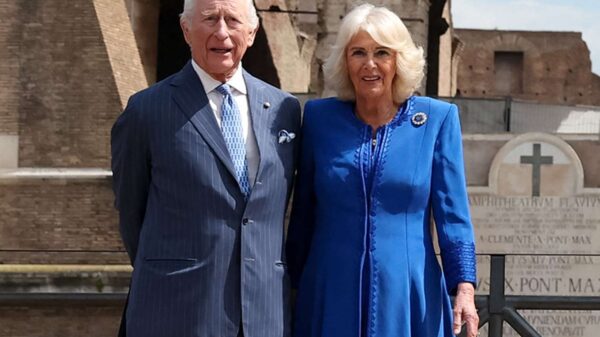Incorporating Mindful Movement: Balancing Body and Mind in 2025
In 2025, more people are discovering that true wellness doesn’t come from high-intensity routines alone—it stems from balance, presence, and awareness. As a result, mindful movement practices such as yoga, tai chi, and mindful walking are gaining popularity for their ability to unite physical activity with emotional and mental clarity.
Defining Mindful Movement in the Modern Era
Mindful movement refers to physical activity performed with intentional awareness. Unlike conventional workouts focused on speed, reps, or competition, mindful movement emphasizes being present in the body, noticing breath patterns, and connecting movement with purpose. This fusion creates a holistic wellness experience that nourishes both the body and the mind.
Yoga Continues to Lead the Movement
Among mindful movement practices, yoga remains the most widely embraced, evolving from a niche spiritual practice to a mainstream wellness essential. With styles ranging from gentle Hatha to energizing Vinyasa, yoga helps practitioners build strength and flexibility while also promoting stress relief, focus, and inner calm through breathwork and meditation.
Tai Chi Offers Gentle Power and Inner Balance
Tai chi, often described as “meditation in motion,” is another key element of mindful movement culture. This ancient Chinese practice involves slow, flowing movements that promote balance, coordination, and inner peace. Its accessibility makes it particularly appealing to older adults or those seeking low-impact exercise with high emotional benefits.
Mindful Walking Reconnects People with the Present
Even something as simple as walking becomes transformative when done mindfully. Mindful walking encourages individuals to slow down, observe their surroundings, and synchronize movement with breath. Practiced in nature or urban settings, it helps reduce anxiety, boost mood, and offer a meditative break from fast-paced routines.
Mental Health Benefits Drive the Popularity Surge
One of the key reasons mindful movement is flourishing is its profound impact on mental health. These practices reduce stress hormones, regulate the nervous system, and improve emotional regulation. In a world where burnout and anxiety are common, people are turning to movement not just to stay fit, but to find emotional balance.
Enhancing Emotional Resilience Through Movement
Beyond reducing stress, mindful movement also builds emotional resilience. The focused nature of these practices helps individuals become more aware of their thoughts and feelings, improving their ability to respond calmly to challenges. This emotional regulation is crucial in navigating life’s uncertainties with grace and self-compassion.
Mindful Movement as Preventive Healthcare
Doctors and wellness professionals increasingly recognize mindful movement as preventive medicine. Regular participation in yoga, tai chi, or similar practices can reduce the risk of chronic illnesses like hypertension, cardiovascular disease, and depression. These low-cost, low-impact methods are being incorporated into healthcare recommendations and wellness programs.
A Gentle Entry Point to Fitness for All Ages
Unlike many fitness trends that may intimidate beginners, mindful movement is inclusive and adaptable. People of all fitness levels, body types, and ages can participate. Whether you’re recovering from an injury or just beginning a wellness journey, mindful movement offers a welcoming path to better health without judgment or competition.
Technology and Online Classes Expand Accessibility
The rise of online wellness platforms has made mindful movement more accessible than ever. Virtual yoga sessions, tai chi tutorials, and mindful walking guides are readily available, allowing people to practice at home, during work breaks, or while traveling. Digital tools have helped transform mindful movement into a daily routine for millions.
Incorporating Mindful Movement into Daily Life
Mindful movement doesn’t have to be confined to a yoga mat or studio. Many individuals are weaving these practices into everyday life—stretching mindfully during work, walking intentionally between tasks, or breathing deeply while cooking. These micro-practices offer quick resets and foster long-term presence and peace.
Employers Embrace Mindful Wellness Initiatives
In the workplace, companies are integrating mindful movement into employee wellness programs. Chair yoga sessions, walking meditation breaks, and breathwork workshops are helping reduce workplace stress, enhance focus, and boost employee satisfaction. These initiatives support productivity while nurturing a culture of well-being.
Mindful Movement and Spiritual Connection
For many, mindful movement offers a deeper spiritual dimension, beyond physical or mental benefits. These practices cultivate self-awareness, gratitude, and an appreciation for the present moment. Whether through breath-centered yoga or reflective walking, individuals report feeling more grounded, connected, and in tune with themselves.
Mindful Movement Complements Traditional Fitness
Rather than replacing traditional exercise, mindful movement is increasingly viewed as a complementary practice. Many fitness enthusiasts add yoga or tai chi to their weekly routines for recovery, flexibility, and mental clarity, creating a well-rounded approach to health that honors both intensity and restoration.
Conclusion: Moving with Intention, Living with Awareness
In 2025, incorporating mindful movement into daily life has become a powerful way to achieve balanced wellness. These practices not only strengthen the body but also center the mind and nurture emotional resilience. As the pace of modern life accelerates, mindful movement offers a welcome reminder: to move gently, breathe deeply, and live with intention.


































